UPSC Daily Current Affairs: 24th February 2025 | Current Affairs & Hindu Analysis: Daily, Weekly & Monthly PDF Download
GS1/Indian Society
Tea Tribes and Jhumur Dance
 Why in News?
Why in News?
The Prime Minister recently observed the largest-ever Jhumur dance performance in Guwahati, celebrating the 200th anniversary of Assam's tea industry.
- Tea tribes in Assam are descendants of laborers brought by the British in the 19th century.
- These communities are primarily from Jharkhand, Odisha, Chhattisgarh, West Bengal, and Andhra Pradesh.
- The workers faced poor wages, inhumane conditions, and limited mobility.
- The community is mainly found in Upper Assam and Barak Valley.
- They currently hold Other Backward Classes (OBC) status but seek Scheduled Tribe (ST) status.
- Despite challenges, the Tea Garden Communities have preserved their cultural identity.
Additional Details
- Tea Tribes: These communities originated from laborers who were either forced or voluntarily migrated under exploitative conditions to work on tea plantations.
- Cultural Identity: The Tea Garden Communities celebrate significant festivals like Tushu Puja and Karam Puja, which feature the traditional Jhumur dance.
- About Jhumur Dance: This folk dance, practiced mainly by the Sadan ethnolinguistic group in Assam, originated in the Chotanagpur Plateau and was brought to Assam during the British colonial period, blending with Assamese culture.
- Performance Style: Women perform the dance in synchronized formations, while men provide musical accompaniment with traditional instruments like madal, dhol, and flute.
- Attire: Female dancers typically wear red and white sarees, while males don kurta-dhoti with gamocha, a traditional Assamese cloth.
- Themes of Jhumur Songs: These songs often reflect themes of love, nature, and the hardships of tea workers, celebrating both the struggles and unity within the community.
The Jhumur dance serves as a cultural bridge, helping the Tea Garden Communities retain their traditions and forge a unique identity in Assam.
GS2/International Relations
Palk Strait
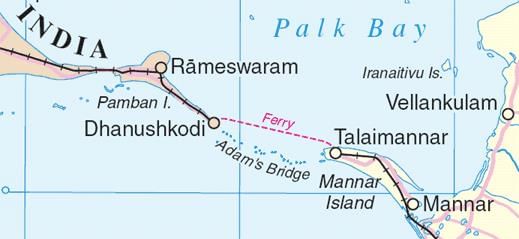 Why in News?
Why in News?
Recently, a significant incident occurred in which 32 fishermen from Tamil Nadu were apprehended by personnel from the Sri Lankan Navy on allegations of poaching within the Palk Strait.
- The Palk Strait is located between southeastern India and northern Sri Lanka.
- It ranges from 40 to 85 miles in width and is less than 330 feet (100 meters) deep.
- Several rivers, including the Vaigai River from India, flow into the strait.
Additional Details
- Palk Strait: This inlet of the Bay of Bengal is bounded by Pamban Island (India) to the south, Adam's Bridge (a series of shoals), and Mannar Island (Sri Lanka). The southwestern part of the strait is also known as Palk Bay.
- Historical Significance: The strait is named after Robert Palk, who served as the governor of the Madras Presidency from 1755 to 1763 during the British Company rule.
- The port of Jaffna, a crucial commercial hub for northern Sri Lanka, is situated along the strait.
- The presence of numerous shoals and islands restricts navigation through the strait, particularly for larger vessels.
The incident involving the fishermen underscores the ongoing tensions regarding fishing rights and jurisdictional issues in this strategically significant maritime area.
GS2/Governance
Completion of the First Phase of 'Desh Ka Prakriti Parikshan Abhiyaan'
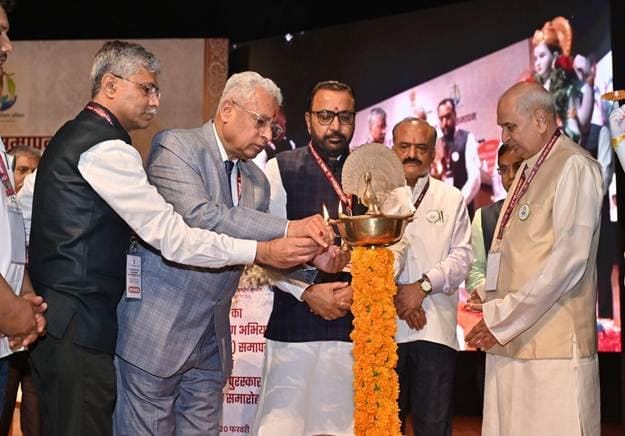 Why in News?
Why in News?
The National Commission for Indian System of Medicine (NCISM) recently held a closing ceremony celebrating the successful completion of the first phase of the 'Desh Ka Prakriti Parikshan Abhiyaan,' which resulted in five historic Guinness World Records.
- The NCISM is a statutory body established under the NCISM Act of 2020.
- Its mandate includes improving access to quality medical education and ensuring a sufficient supply of qualified medical professionals in the Indian System of Medicine across the nation.
Additional Details
- Composition: The NCISM comprises 29 members appointed by the central government, with a search committee recommending candidates for key positions, including the Chairperson and leaders of four autonomous boards.
- Functions:The commission is responsible for:
- Framing policies for the regulation of medical institutions and professionals within the Indian System of Medicine.
- Assessing the healthcare human resources and infrastructure needs.
- Ensuring state medical councils comply with established regulations.
- Facilitating coordination among autonomous boards associated with the NCISM.
This event marks a significant milestone for the NCISM, emphasizing its commitment to enhancing the Indian System of Medicine and fostering a robust framework for medical education and professional standards in India.
GS1/History & Culture
Ratnagiri Buddhist Heritage Site in Odisha
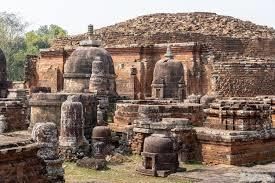 Why in News?
Why in News?
On December 1, 2024, a collaborative excavation project commenced in Jajpur, Odisha, involving a team of archaeologists, students, and laborers. This initiative aims to further explore the Ratnagiri Buddhist Heritage Site, which holds significant historical and cultural value.
- Ratnagiri is located in the Jajpur district of Odisha and is part of the "Diamond Triangle" along with Udayagiri and Lalitgiri.
- This site was a prominent Vajrayana Buddhist center from the 5th to the 13th century AD.
- First reported in 1906, the site underwent excavations between 1958 and 1961 led by Debala Mitra.
- It is recognized as 'Sri Ratnagiri Mahavihara Arya Bhikshu Sangha' through various inscriptions found at the site.
Additional Details
- Largest Buddha Head: The site features a Buddha head measuring 1.4 meters tall, crafted from Khondalite stone and adorned with intricate carvings.
- Monolithic Elephant Sculpture: This sculpture is believed to be part of an ancient shrine complex.
- Votive Stupas: The site contains hundreds of stupas used for spiritual offerings, which are reflective of Vajrayana Buddhist traditions.
- Sanskrit Inscriptions: Found in Kutila script, these inscriptions provide valuable insights into monastic teachings and rituals.
- Stone Tablets and Masonry Structures: These indicate the existence of large, organized monastic settlements.
- Buddhist Deities: Includes representations of Amoghasiddhi, Ratnasambhava, Akshobhya, Amitabha, Tara, Marici, Padmapani, and Cunda.
- Local Artefacts: Items from the site have been repurposed in local villages for decorations, Tulsi bases, and construction materials.
This site is crucial for understanding the history and evolution of Buddhism in India, particularly the Vajrayana tradition, as well as its cultural manifestations in art and architecture.
GS3/Science and Technology
HKU5-CoV-2: A Newly Discovered Bat Coronavirus
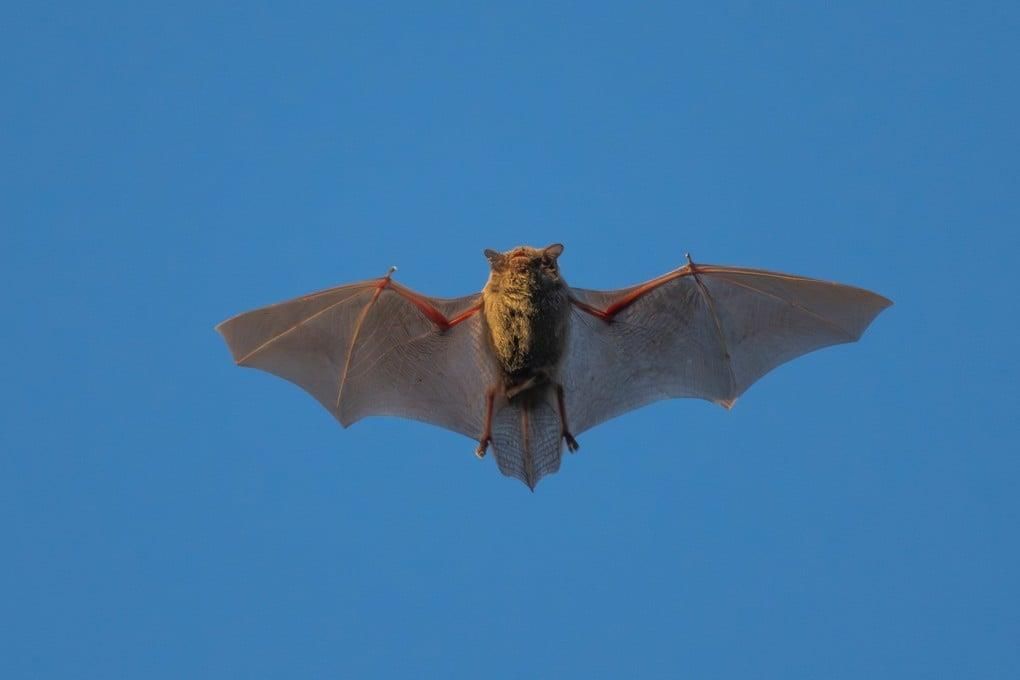 Why in News?
Why in News?
A newly identified bat coronavirus, named HKU5-CoV-2, has been discovered in China. This virus shows a close resemblance to SARS-CoV-2, the virus responsible for the COVID-19 pandemic, raising concerns about its potential impact on public health.
- HKU5-CoV-2 is a newly discovered bat coronavirus.
- It closely resembles SARS-CoV-2, the virus behind the COVID-19 pandemic.
- The virus belongs to the Merbecovirus subgenus, which includes pathogens responsible for diseases like MERS.
- HKU5-CoV-2 can bind to human ACE2 receptors, similar to SARS-CoV-2, suggesting potential for animal-to-human transmission.
- There are currently no confirmed human cases of HKU5-CoV-2.
Additional Details
- Binding Affinity: HKU5-CoV-2 has a lower binding affinity to human ACE2 receptors compared to SARS-CoV-2, and its capacity to infect humans on a large scale is still unclear.
- Transmission Potential: The virus can bind to ACE2 receptors in various mammalian species, indicating that it might spread through an intermediate animal host before reaching humans.
- Research Team: The discovery was made by a team of virologists led by Shi Zhengli, known as "Batwoman" for her extensive research on coronaviruses at the Wuhan Institute of Virology.
While there are no confirmed cases of HKU5-CoV-2 in humans, its discovery underscores the need for ongoing surveillance of coronaviruses that have the potential to cause future pandemics.
GS3/Environment
Soliga Tribes of BRT Tiger Reserve
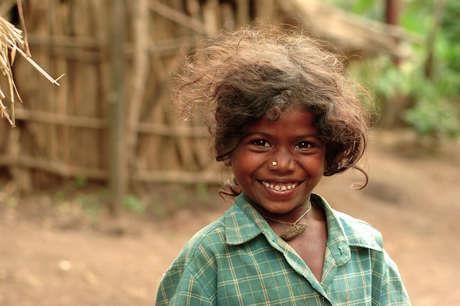 Why in News?
Why in News?
The Prime Minister of India recently acknowledged the Soliga Tribal community in the 119th edition of Mann Ki Baat, commending their significant role in tiger conservation efforts.
- The Soliga are indigenous, forest-dwelling people primarily located in Tamil Nadu and Karnataka.
- The name "Soliga" translates to "children of bamboo," symbolizing their deep-rooted connection with nature.
- They inhabit areas surrounding the Biligiri Rangana Hills and Male Mahadeshwara Hills.
- In 2011, the Soliga became the first tribal community to have their forest rights recognized by a court within a tiger reserve.
Additional Details
- Language: The Soliga people speak a Dravidian language called Sholaga, along with Kannada and Tamil.
- Housing: Their homes consist of single-room huts constructed from bamboo and mud.
- Economy: The Soliga's traditional economy relies on shifting cultivation and collecting minor forest produce.
- Honey is a vital part of the Soliga diet, and they have sustainable practices that reflect their belief in coexisting harmoniously with nature.
- They are known for creating unique utility products, such as the 'jottai', a cup made from leaves.
- Religion: In addition to practicing Hindu customs, the Soliga engage in naturism and animism.
The recognition and appreciation of the Soliga community underscores the importance of indigenous knowledge and practices in environmental conservation, particularly in preserving biodiversity within tiger reserves.
GS3/Science and Technology
Extended Reality (XR)
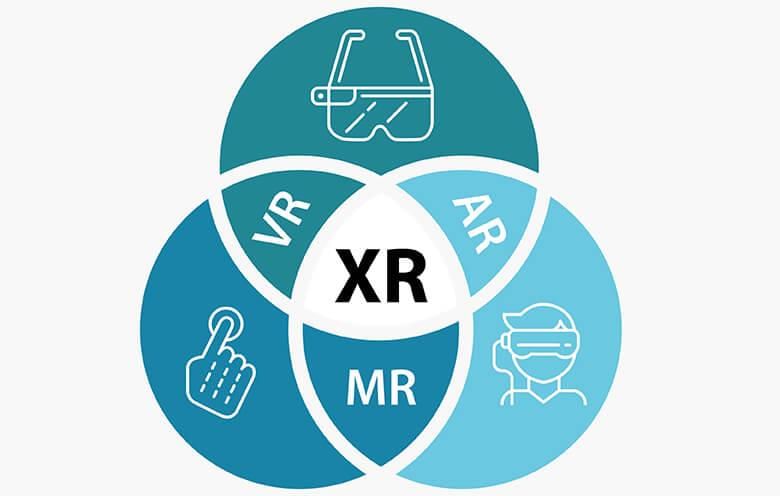 Why in News?
Why in News?
The XR Creator Hackathon is being organized by Wavelaps in collaboration with the WAVES 2025 initiative of the Ministry of Information and Broadcasting, highlighting the growing significance of Extended Reality in the media and entertainment sector.
- Extended Reality (XR) combines immersive technologies such as Virtual Reality (VR), Augmented Reality (AR), and Mixed Reality (MR).
- The WAVES 2025 initiative aims to foster innovation and collaboration in the media and entertainment industry.
Additional Details
- Extended Reality (XR): XR represents a blend of physical and virtual worlds, enhancing our experiences through immersive technologies.
- Augmented Reality (AR): In AR, digital information and objects are overlaid on the real world, enhancing it with images, text, and animations that can be viewed through devices like AR glasses and smartphones.
- Virtual Reality (VR): Unlike AR, VR immerses users in a completely simulated environment, requiring the use of VR headsets to explore artificial worlds.
- Mixed Reality (MR): MR allows for real-time interaction between digital and real-world objects, necessitating advanced processing capabilities and specialized headsets.
- WAVES 2025: This initiative by the Ministry of Information and Broadcasting aims to position India as a leader in content creation and technology integration within the global media and entertainment landscape.
In summary, the XR Creator Hackathon and the WAVES 2025 initiative are pivotal in promoting the integration of XR technologies in India’s media and entertainment industry, encouraging innovation and collaboration among creators and technologists.
GS3/Science and Technology
Microsoft’s Quantum Computing Breakthrough
 Why in News?
Why in News?
Recently, Microsoft made headlines by introducing Majorana 1, a groundbreaking chip that utilizes engineered particles within a novel state of matter. This advancement is part of Microsoft's ambition to create quantum computers capable of addressing industrial-scale problems within the next few years (2027-29), significantly reducing the timeline typically expected for such technology. However, Microsoft has yet to provide any performance metrics for this new quantum chip.
- Microsoft has developed Majorana 1, a chip that employs topological qubits.
- The goal is to enable quantum computers to solve complex problems faster than traditional methods.
- Topological qubits offer enhanced stability and reduced error rates compared to conventional qubits.
Additional Details
- Topological Qubits: These qubits are a more stable form of quantum bit, with information stored based on the arrangement and braiding of specially engineered particles known as anyons. This unique structure minimizes susceptibility to errors.
- Challenges in Development: The creation of topological qubits has been challenging due to the theoretical nature of Majorana fermions. These particles, theorized by Ettore Majorana over 80 years ago, have only recently been observed, specifically in the form of Majorana zero modes (MZMs), which are crucial for robust quantum computation.
- Topoconductors: Microsoft has designed topoconductors, integrating indium arsenide and aluminum to create a new type of qubit. When cooled and subjected to magnetic fields, these materials facilitate the development of scalable quantum systems.
- Majorana 1 Chip: The chip consists of eight qubits and features an innovative "H" shaped structure of aluminum nanowires, with each structure controlling four Majorana particles.
Microsoft's vision for quantum computing extends to various potential applications, including:
- Decomposing microplastics into harmless byproducts.
- Creating self-healing materials for various industries.
- Utilizing quantum computing alongside generative AI to design new materials or molecules through natural language input.
In contrast to classical computers, which utilize binary code and logic gates to process information, quantum computers leverage qubits that can exist in multiple states at once, allowing them to handle more complex calculations. While supercomputers enhance classical computing speed, quantum computers offer unique computational capabilities that surpass traditional architectures.
GS2/Polity
Zonal Councils in India
Why in News?
The Union Home Minister recently chaired the 27th meeting of the Western Zonal Council in Pune, highlighting the ongoing importance of Zonal Councils in facilitating cooperation among states.
- Zonal Councils were established to promote inter-state cooperation and resolve disputes.
- They were created under the States Reorganisation Act of 1956.
- The councils consist of multiple states and are chaired by the Union Home Minister.
Additional Details
- Origin & Purpose: Proposed by Jawaharlal Nehru in 1956, Zonal Councils aim to foster cooperation among states after reorganization and resolve inter-state disputes.
- Composition & Structure: There are five Zonal Councils along with the North-Eastern Council (NEC). Each council includes the Union Home Minister as Chairperson, with Chief Ministers as Vice-Chairpersons on a rotating yearly basis. Each state is represented by its Chief Minister and two additional ministers.
- Member States:
- Northern Council: Haryana, Himachal Pradesh, Jammu & Kashmir, Punjab, Rajasthan, Delhi, Chandigarh.
- Central Council: Chhattisgarh, Uttarakhand, Uttar Pradesh, Madhya Pradesh.
- Eastern Council: Bihar, Jharkhand, Odisha, West Bengal.
- Western Council: Goa, Gujarat, Maharashtra, Dadra & Nagar Haveli, Daman & Diu.
- Southern Council: Andhra Pradesh, Karnataka, Kerala, Tamil Nadu, Puducherry.
- North-Eastern Council: Assam, Arunachal Pradesh, Manipur, Tripura, Mizoram, Meghalaya, Nagaland, Sikkim (added in 2002).
- Functions & Recent Developments: Zonal Councils resolve inter-state disputes, enhance Centre-State coordination, and address issues related to border disputes, economic planning, transportation, and linguistic minorities. Recent transformations have made these councils more action-oriented.
The Zonal Councils play a crucial role in strengthening cooperative federalism and promoting balanced socio-economic development across regions.
Previous Year Question: [2013] Which of the following bodies is/are not mentioned in the Indian Constitution?
- 1. National Development Council
- 2. Planning Commission
- 3. Zonal Councils
Select the correct answer using the codes given below.
- (a) 1 and 2 only
- (b) 2 only
- (c) 1 and 3 only
- (d) 1, 2 and 3
GS2/Polity
Ensuring Electoral Integrity - The Controversy Over Election Commission Appointments
Why in News?
India, recognized as the world's largest democracy, depends on the Election Commission of India (ECI) to facilitate free and fair elections. However, the appointment process for Election Commissioners (ECs) has raised significant concerns regarding the independence and effectiveness of the ECI, leading to calls from civil society organizations (CSOs) and political leaders for a more transparent and bipartisan approach.
- The appointment process of Election Commissioners in India has come under scrutiny.
- There is a push from civil society for reforms to ensure transparency and independence in the ECI.
- Recent legislation has altered the selection committee, raising concerns about executive dominance.
Additional Details
- Civil Society Organizations (CSOs): Groups like the Association for Democratic Reforms (ADR) and the Internet Freedom Foundation have been leading advocates for electoral reforms, filing legal challenges to improve the appointment process for the ECI.
- Legal Challenges: In 2015, ADR petitioned against the government's control over EC appointments, citing a lack of independence. By March 2023, the Supreme Court acknowledged that no law governing these appointments had been enacted in over 70 years, despite constitutional requirements under Article 324(2).
- 2023 Legislation: The Chief Election Commissioner and Other Election Commissioners (Appointment, Conditions of Service, and Term of Office) Act, 2023, modified the Supreme Court's directive by removing the Chief Justice of India from the selection panel, replacing them with a Union Cabinet Minister, which critics argue compromises impartiality.
- Judicial Review: As of January 2024, the Supreme Court is reviewing the 2023 Act amid concerns it allows the ruling party excessive influence over EC appointments.
The integrity of India’s electoral process hinges on the independence and impartiality of the Election Commission. There is an urgent need to adopt a bipartisan and neutral collegium-based appointment system inspired by global best practices. Such measures would enhance the ECI's autonomy and increase public confidence in the electoral system. The ongoing debate surrounding the 2023 Act reflects the complexities and challenges in safeguarding democratic institutions in India.
GS3/Economy
International Finance Corporation Withdraws Funding for Waste-to-Energy Projects in Gujarat
 Why in News?
Why in News?
The International Finance Corporation (IFC) has recently announced its decision not to proceed with a $40 million loan intended for waste-to-energy (WTE) incineration projects located in Gujarat, India. This withdrawal is significant as it reflects the IFC's stance on environmental sustainability and investment priorities.
- The IFC is the private lending arm of the World Bank.
- It was established in 1956 with a focus on fostering economic development through private enterprise investment.
- The decision to withdraw funding highlights concerns regarding the environmental impact of waste incineration.
Additional Details
- International Finance Corporation: The IFC plays a crucial role in supporting private sector development in developing countries through various financial instruments, including loans and direct investments.
- Functions: It not only provides financing but also offers advisory services to enhance the capacity of private enterprises in nations lacking essential business infrastructure.
- Capital Mobilization: The IFC actively works to mobilize capital from other investors and lenders through mechanisms like loan participations and parallel loans.
- Governance Structure: The organization is owned by its member countries, which are also its shareholders and have voting rights on corporate matters.
- Headquarters: The IFC is headquartered in Washington, D.C.
This decision by the IFC may lead to a reevaluation of similar projects in the future, emphasizing the need for sustainable practices in waste management and energy production.
|
55 videos|5389 docs|1141 tests
|
FAQs on UPSC Daily Current Affairs: 24th February 2025 - Current Affairs & Hindu Analysis: Daily, Weekly & Monthly
| 1. What are the cultural significance and traditional aspects of the Jhumur dance performed by the Tea Tribes in India? |  |
| 2. What is the Palk Strait, and why is it significant for India and Sri Lanka? |  |
| 3. What is the 'Desh Ka Prakriti Parikshan Abhiyaan,' and what are its main objectives? |  |
| 4. What is the significance of the Ratnagiri Buddhist Heritage Site in Odisha? |  |
| 5. How does Microsoft's breakthrough in quantum computing impact various industries? |  |
















